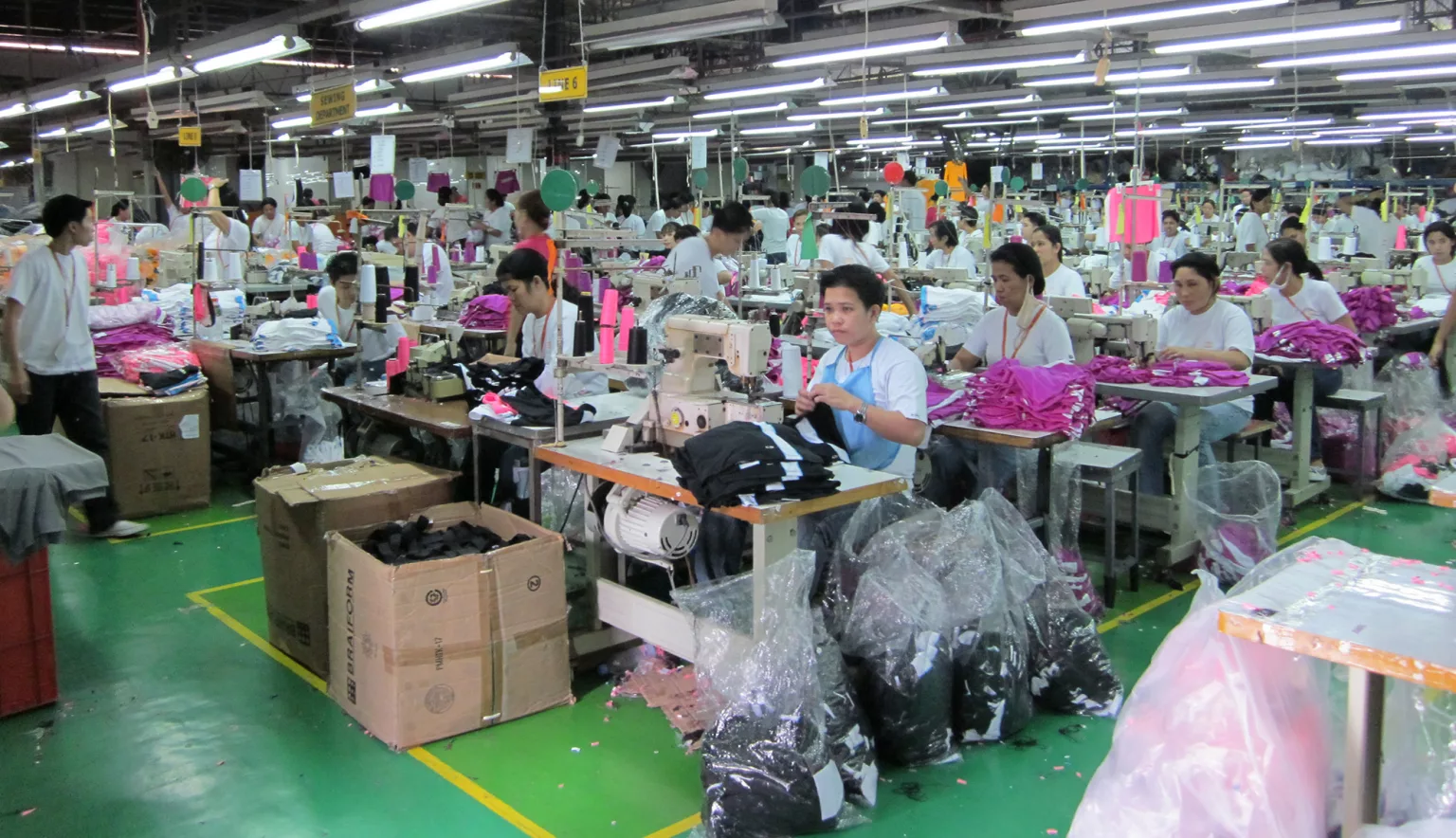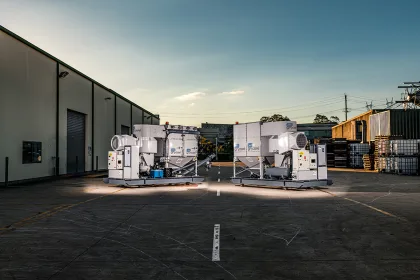We talk to PhilExport about the Philippines and its robust export industry, which is on the road to recovery after the shock of the coronavirus pandemic.
PHILIPPINES EXPORT
With its increasing industrialisation and skilled workforce, the Philippines has one of the most dynamic economies in the East Asia Pacific Region. Between 2010 – 2019, the country’s economy has been growing at an average annual rate of 6.4 percent.
Its semiconductor and manufacturing industry is the biggest economic growth driver in the Philippines, employing over three million workers directly and indirectly.
The Philippines also has a robust, thriving export industry. Unsurprisingly, electronics products are the country’s top export. According to a report by the Filipino government, they accounted for 55.9 percent of total exports between January 2019 and January 2020, with total earnings of $3.23 billion. The same report also showed significant growth in other exports, in particular gold (a 46 percent growth) and other minerals (68.3 percent).
However, exports of machinery and transport equipment had contracted by 35.1 percent.
Despite such a robust economy, the Philippines exports industry suffered significantly during the coronavirus pandemic, in large part due to the stringent lockdowns imposed on the country to try and control cases – many companies were forced to halt production. In August 2020, exports had tumbled 18.6 percent since the previous year – the fifth consecutive month of decline.
RESCUE AND RECOVERY
Understandably, the government and organisations – including PHILEXPORT, which represents around 70 percent of the country’s export revenues – is keen to help the economy and its export industry recover.
As a private sector response, PHILEXPORT developed the “New Normal Export and MSME Roadmap” to help MSMEs and exporters transition to the ‘new normal’, while bridging the gap from the crisis to the strategies in the Philippine Export Development Plan. Overall, the roadmap aims to control the epidemic, restart and expand economic activities, and finally transition exports and SMEs to a digital economy. It is also working with the Small Business Corporation to provide loans for its members to help them restart production.
Ultimately, the Philippines’ exports will be a major economic driver, helping restore the jobs and livelihoods lost during the pandemic. It is hope that government policies will stimulate recovery and help businesses restart.
INTERVIEW WITH PHILEXPORT
The Philippine Exporters Confederation, Inc. or PHILEXPORT, is the country’s umbrella organisation of exporters which is mandated, under the Export Development Act of 1994, to strengthen the country’s export industry through its export promotion and development programmes.
PHILEXPORT is a non-stock, non-profit service organisation endeavouring to help promote and grow the Philippines’ export industry in a sustainable manner. To date, it has a membership of around 4,000 members, including companies and industry associations.
In fulfilling its mandate, PHILEXPORT implements numerous institutional and special projects and services in policy advocacy, facilitation and advisory, training, project development and more.
“As the unified voice of exporters, PHILEXPORT is actively engaged in policy discussions and deliberations on issues affecting the industry. Position papers and policy programmes are developed and implemented based on inputs generated from its Policy Committees,” explains Dr Sergio R. Ortiz-Luis Jr., President of PHILEXPORT.
PHILEXPORT has likewise been a member and an active participant on various policy Committees, Councils and chambers of commerce, including the National Competitiveness Council (NCC) and International Chamber of Commerce of the Philippines (ICCP).It sits as Vice Chairman at the Export Development Council, the highest export policymaking body in the country.
Through its Export Facilitation Department, PHILEXPORT is able to provide necessary frontline services such as trade advisory, facilitation and referral; buyer-seller and investment matching; trade fair participation; special promotions programs and selling missions to PHILEXPORT members and foreign clients.
To help address the technical and funding requirements of PHILEXPORT and its members, PHILEXPORT networks with local and foreign partners in the implementation of developmental projects and training programmes. It also manages the Regional and Sectoral Support Funds from which members may draw modest amounts to subsidise their projects for capability building, production of promotional collaterals, participation in trade shows, product development and productivity enhancement. It operates its bonded warehouse 1045 for miscellaneous goods, to enable its members to avail of the duty-free importation of their raw materials, inputs and packaging to manufacture goods for re-export.
HIGHLIGHTS AND ACCOMPLISHMENTS
Representing some 70 percent of the country’s export revenues from over 4,000 members nationwide, PHILEXPORT delivers critical programmes and services for the export community and the economy.
“Our advocacies are instrumental in helping ensure a conducive, competitive, sustainable trade environment through the years,” explains Dr Ortiz-Luis Jr.
After the enactment of the Export Development Act in 1994, many other laws and policies were passed consistent with these objectives, including the Jewellery Development Act, Magna Carta for MSMEs, E-commerce Law, Customs Modernization and Tariff Act, accession to the Kyoto Convention for trade facilitation and Export Development Act or EDA, which gave birth to, among others the World Trade Center. In 2006, PHILEXPORT facilitated the setting up of the WTC as a showcase and signal to the world of the Philippine intent to be a major exporter.
“At the moment, the WTC is being used as a quarantine facility mostly for returning OFWs. But as soon as it is already safe and practical, we will resume construction of a condotel and a 5-star hotel within the complex of the WTC, all of which sit on a 5.1 hectare land ceded to PHILEXPORT also under the EDA,” says the President.
The condotel will house the offices of the major business organisations in the country including the Philippine Chamber of Commerce and Industry (PCCI), Employers Confederation of the Philippines (ECOP), Philippine Franchise Association, and GS 1.
PHILEXPORT also led in pushing for the country’s accession to the World Trade Organization in 1994, setting the tone for the liberalisation of the banking, retail, telecommunications and transportation sectors. To this day, PHILEXPORT is actively involved in opening and expanding market access for Philippine products and services through the various Free Trade Agreements (FTAs).
“We also have a continuing advocacy for a competitive exchange rate and ease of doing business. Likewise, we played a major role in establishing the Brunei-Indonesia- Malaysia-Philippines East Asia Growth Area or BIMP EAGA in 1994, the bar-coding system, and the Philippine Franchise and Retail Associations,” Dr Ortiz-Luis Jr. proclaims. Philippine exports in the ‘new normal’
“We are in a raging global war like no other. And we know that what makes this struggle formidable compared with historical records is the unseen deadly enemy. In this state, the virus has and continues to wreak havoc, compromise and destroy lives and economies worldwide,” says Dr Ortiz-Luis Jr.
The Philippines had one of the longest and strictest lockdowns in the world, which resulted in severe economic damage. Exports, inevitably, were affected.
Exports declined by 18.6 percent in August to $5.13 billion and 9.1 percent year-on-year to $5.65 billion in July 2020, after a 12.5 percent to $5.33 billion dip from $6.15 billion in June 2019. This was the fifth consecutive month of decline recorded for exports, but a performance that has improved from the 50.8 percent drop in April 2020, its highest recorded contraction since January 2009 and 35.6 percent in May.
“We are confident of our recovery based on this momentum, although export targets for the year and 2021 have been reduced based on the current performance,” Dr Ortiz-Luis Jr. adds.
As part of the initial response, the government has implemented several economic relief measures. Before the end of June, around P45 billion in subsidies were provided to 4.1 million formal and informal employees through government programmes including the Small Business Wage Subsidy (SBWS), COVID-19 Adjustment Measures Program (CAMP), TUPAD, and AKAP. Meanwhile, payment of residential and commercial rents and loans have also been extended to help especially MSMEs.
“As these are evolving, business cannot just remain a spectator. Consistent with the safety and health protocols mandating physical or social distancing, establishments and enterprises have shifted business models mainly to remain afloat. It helped that prior to COVID-19, the medium and big-sized businesses were already preparing to adopt and adapt to the Fourth Industrial Revolution that embeds technology in almost every business function. In contrast, the micro and small enterprises, which are the most vulnerable in this crisis, are still in various levels of survival strategies,” Dr Ortiz-Luis Jr. explains.
“Within this context, PHILEXPORT is implementing its Road to FIRe (Fourth Industrial Revolution) Project to handhold members upgrade to digital operations. This is a project we are doing with the Departments of Science and Technology, DTI, Labor and Employment, and Development Academy of the Philippines.”
All in all, PHILEXPORT has reason to believe that the worst of the crisis is over, thanks to slow signs of economic recovery. The relaxing of quarantine measures in some countries, the gradual reopening of businesses and resumption of production suggest that the export sector is slowly getting back onto its feet.


























